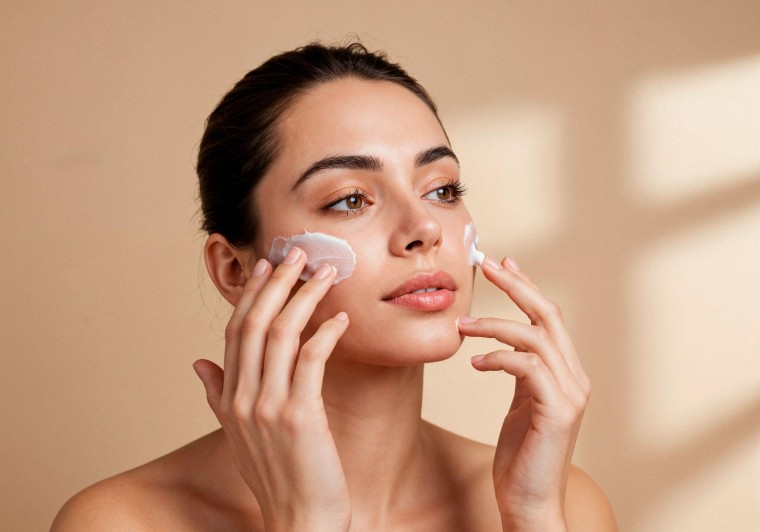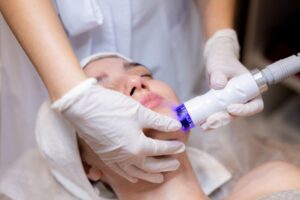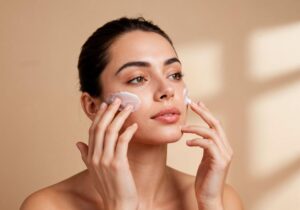
Ghee has long been celebrated in Ayurveda as a deeply nourishing ingredient that enhances skin health, promotes softness, and restores the skin’s natural radiance. Its rich texture and unique nutrient profile make it an exceptional choice for natural skincare routines. When used consistently, it helps replenish lost moisture, combat dullness, and soothe irritation, making it suitable for most skin types.
In traditional skincare, many people rely on ghee moisturizer for skin whitening because of its ability to brighten the complexion, reduce uneven pigmentation, and impart a luminous glow. Its natural fatty acids and antioxidants support healthier, more vibrant skin without the harsh effects of chemical-based cosmetics.
For those who prefer authentic, traditionally prepared ghee, brands such as Gaurisatva are known for their pure, additive-free formulations that retain all the benefits needed for effective skincare applications.
Key Nutrients in Ghee That Benefit Facial Skin
Ghee is a powerhouse of vitamins and healthy fats that nourish the skin at a cellular level. It contains vitamins A, D, E, and K, all of which play essential roles in repairing tissue, improving elasticity, and supporting skin regeneration. These nutrients make ghee a potent natural remedy for dullness, dryness, and early signs of aging.
The healthy fatty acids in ghee offer deep moisturization, helping to strengthen the skin’s natural barrier. This locks in moisture, reduces transepidermal water loss, and keeps skin supple throughout the day. Additionally, ghee’s anti-inflammatory properties soothe redness, irritation, and sensitivity, making it a safe choice for fragile or reactive skin.
How Ghee Helps Achieve a Natural Glow
A natural glow comes from healthy, well-nourished, and hydrated skin. Ghee supports these outcomes in multiple ways. It nourishes the deeper layers of the skin, enhancing blood circulation and restoring vitality. Its lingering hydration helps maintain a soft, dewy appearance, especially when used regularly at night.
Over time, ghee helps fade mild pigmentation, soften rough patches, and smooth fine lines. Its soothing and restorative properties assist in creating an even-toned complexion. Those dealing with dullness caused by pollution, stress, or lifestyle habits often see noticeable improvement when ghee becomes a part of their daily skincare routine.
Different Ways to Apply Ghee to Your Face
There are multiple ways to integrate ghee into your skincare routine, depending on your skin type and specific concerns. Some of the most popular application methods include:
Using Ghee as a Night Moisturizer
Applying a thin layer of ghee before bedtime allows your skin to absorb its nourishment while you sleep. Nighttime is when the skin naturally repairs itself, making it the ideal period to use rich, restorative ingredients.
Ghee as a Face Massage Oil
Ghee works wonderfully for facial massage, helping stimulate circulation and improve lymphatic drainage. A gentle massage with warm ghee enhances elasticity and supports collagen production, resulting in skin that appears firmer and more radiant.
Ghee as a Spot Treatment
For areas of dryness, pigmentation, or irritation, ghee can be applied in small amounts to target specific concerns. Its healing properties help calm inflammation and support faster recovery.
Ghee Mixed With Natural Ingredients
You can combine ghee with kitchen ingredients like honey, turmeric, or rose water to create personalized face masks. These blends can address concerns like tan removal, dullness, and acne marks.
Ghee Face Masks for Radiant Skin
Ghee serves as a nourishing base for many effective DIY masks. Here are a few combinations that enhance skin brightness and smoothness:
Ghee and Turmeric Mask
Mixing a small amount of turmeric with ghee creates a brightening and anti-inflammatory mask. This blend helps reduce pigmentation, combat acne, and enhance the skin’s natural glow.
Ghee and Honey Mask
A blend of ghee and honey deeply hydrates the skin, creating a soft, plump texture. Honey’s antibacterial properties also help prevent breakouts while supporting smoother skin.
Ghee and Gram Flour Mask
Ideal for oily or combination skin, this mask gently exfoliates while providing nourishment to the skin. It helps clear pores, remove excess oil, and maintain a balanced complexion.
Ghee and Aloe Vera Gel
This combination is soothing and cooling, making it perfect for sensitive or irritated skin. Aloe enhances hydration while ghee repairs and calms the skin barrier.
How to Use Ghee on Different Skin Types
Dry Skin
Ghee is most beneficial for dry skin, as it provides intense hydration and helps repair cracks and flakiness. Regular use restores smoothness, reduces tightness, and improves overall softness.
Oily Skin
Although ghee is rich, it can still be used in small amounts on oily skin. When applied lightly or mixed with ingredients like aloe or rosewater, it helps balance excess oil and repair the skin barrier without clogging pores.
Combination Skin
Applying ghee only to dry areas, such as cheeks or the forehead, can help maintain balanced hydration. It offers nourishment without making the T-zone oily.
Sensitive Skin
Ghee’s anti-inflammatory and soothing nature makes it suitable for sensitive skin. It reduces redness, calms irritation, and strengthens the skin’s natural defense mechanism.
Aging Skin
Mature skin benefits significantly from ghee’s ability to boost elasticity and reduce fine lines. Regular massage with ghee promotes better collagen formation, resulting in firmer, more youthful-looking skin.
Tips for Using Ghee Safely and Effectively
While ghee is generally safe, following these best practices ensures maximum benefits:
- Use only pure, high-quality ghee. Low-quality or adulterated versions may cause skin irritation.
- Apply sparingly. A thin layer is usually enough for visible results.
- Warm slightly before application. Lukewarm ghee absorbs faster and spreads more easily.
- Avoid mixing with too many ingredients. Simple combinations are often the most effective and reduce the risk of irritation.
- Patch test before first use. This ensures your skin responds well to ghee.
- Use consistently. Regular application delivers the best long-term glow.
Additionally, maintain a holistic routine. Hydration, diet, and sun protection all contribute to enhancing the glow provided by ghee.
Common Mistakes to Avoid When Using Ghee
To ensure ghee works effectively without clogging pores or causing breakouts, avoid the following:
- Applying too much, especially on oily or acne-prone skin
- Using ghee on dirty or sweaty skin
- Leaving it on during the daytime when exposed to dust and pollution
- Combining ghee with harsh exfoliants
- Applying to active acne lesions
Correct usage ensures that the skin absorbs its nutrients properly, allowing you to enjoy a smoother, more radiant complexion.
Achieving a Lasting Natural Glow With Ghee
Ghee is a versatile, nutrient-rich skincare ingredient that has stood the test of time. Its deeply moisturizing, healing, and brightening properties support healthy, glowing skin, no matter your skin type. Whether used as a night moisturizer, massage oil, or blended in face masks, ghee delivers nourishment that chemical-based products often fail to match.
By using high-quality ghee, applying it correctly, and maintaining consistent skincare habits, you can achieve a radiant, naturally luminous complexion. Ghee not only enhances outer beauty but also supports skin health from within, making it one of the most effective natural remedies for achieving a glowing, youthful complexion.






